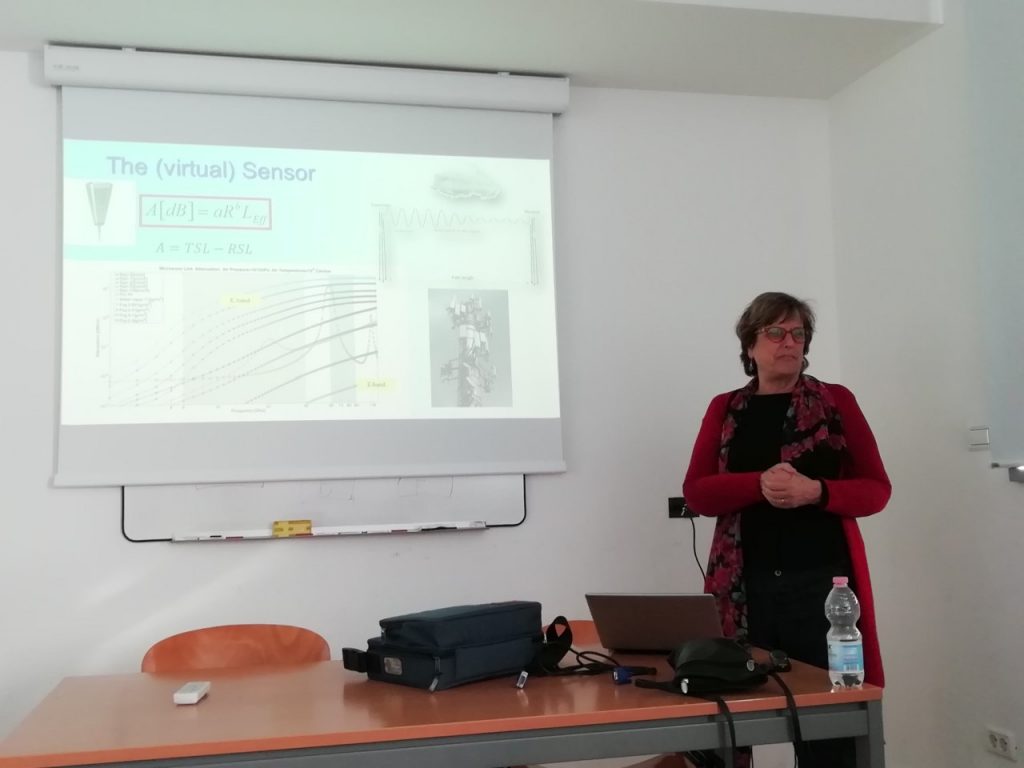On February 18, 2020, a seminar by Professor Hagit Messer from the Signal Processing School of Electrical Engineering of the University of Tel Aviv was held at the Polytechnic University of Milan (DEIB): “Comparative analysis of CML-based rainfall retrieval methods”.
Prof. Messer, Life Fellow of the IEEE, is an expert in statistical signal processing with applications to source localization, communication and environmental monitoring. She has published numerous journal and conference papers, and has supervised tens of graduate students.
The topic of the seminar was the use of commercial microwave links (CML) as opportunistic sensors for monitoring precipitation. Prof. Messer illustrated and compared different techniques for deriving the precipitation values from the information of the signal attenuation.
With a view to consolidating a network with experts also at an international level, the Mopram Team thanks Prof. Messer for holding this seminar, it was an interesting and useful opportunity for discussion.
Abstract
The use of commercial microwave links (CMLs) as opportunistic near-ground rain sensors has been widely studied since first suggested by us in 2006 . In particular, reliable retrieval of 2-D near-ground rain fields based on CML measurements has been demonstrated in several countries around the world. It is done either by classic spatial interpolation methods, in which a CML is considered as a single virtual rain gauge (VRG), located in the center of the link, or by methods where the fact that a CML measures the path integration of the rain along the link (as tomography) is exploited. In this talk I will present a study which compares the two approaches. First we compared systematically the empirical performance of IDW-based algorithm where each CML is represented by a single VRG, with the case where it is represented by several VRGs, using simulated as well as real data. Then, a theoretical, algorithm-free, comparative performance analysis results are presented. Both theoretical and empirical results show that in general, the performance advantage of the more sophisticated algorithm depends on the nature of the rain field, where a spotty rain is better retrieved by algorithms which exploit the CML’s length.
Info about the seminar: https://www.deib.polimi.it/eng/events/details/1990
Bio Prof. Messer:https://english.tau.ac.il/profile/messer

